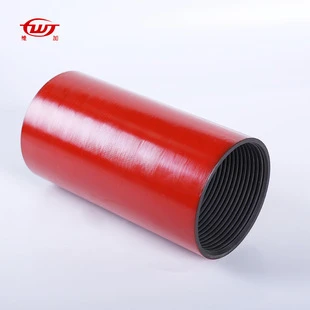- Afrikaans
- Albanian
- Amharic
- Arabic
- Armenian
- Azerbaijani
- Basque
- Belarusian
- Bengali
- Bosnian
- Bulgarian
- Catalan
- Cebuano
- Corsican
- Croatian
- Czech
- Danish
- Dutch
- English
- Esperanto
- Estonian
- Finnish
- French
- Frisian
- Galician
- Georgian
- German
- Greek
- Gujarati
- Haitian Creole
- hausa
- hawaiian
- Hebrew
- Hindi
- Miao
- Hungarian
- Icelandic
- igbo
- Indonesian
- irish
- Italian
- Japanese
- Javanese
- Kannada
- kazakh
- Khmer
- Rwandese
- Korean
- Kurdish
- Kyrgyz
- Lao
- Latin
- Latvian
- Lithuanian
- Luxembourgish
- Macedonian
- Malgashi
- Malay
- Malayalam
- Maltese
- Maori
- Marathi
- Mongolian
- Myanmar
- Nepali
- Norwegian
- Norwegian
- Occitan
- Pashto
- Persian
- Polish
- Portuguese
- Punjabi
- Romanian
- Russian
- Samoan
- Scottish Gaelic
- Serbian
- Sesotho
- Shona
- Sindhi
- Sinhala
- Slovak
- Slovenian
- Somali
- Spanish
- Sundanese
- Swahili
- Swedish
- Tagalog
- Tajik
- Tamil
- Tatar
- Telugu
- Thai
- Turkish
- Turkmen
- Ukrainian
- Urdu
- Uighur
- Uzbek
- Vietnamese
- Welsh
- Bantu
- Yiddish
- Yoruba
- Zulu
Well Casing Coupler Innovations for Enhanced Well Integrity and Performance
The Importance of Well Casing Couplers in Oil and Gas Operations
In the oil and gas industry, the extraction of resources relies heavily on the effectiveness and durability of drilling equipment and techniques. Among these essential components, well casing couplers play a crucial role in ensuring the integrity and efficiency of drilling operations. This article delves into the significance of well casing couplers, their types, applications, and the materials used in their construction.
Understanding Well Casing
Before discussing well casing couplers, it’s essential to understand well casing itself. Well casing refers to the tubular structure that is placed in the drilled well to provide support and prevent the collapse of the wellbore. This casing also isolates the wellbore from surrounding geological formations, preventing contamination of the groundwater and ensuring safety during drilling operations.
Well casing must be made from materials that can withstand high pressures and resist corrosion from the harsh environments in which they operate. The casing is generally made from steel, which is recognized for its strength and durability.
The Role of Well Casing Couplers
Well casing couplers, also known as casing accessories or connectors, are components that are used to join two lengths of casing pipe together. They are essential for enabling the drilling process to reach greater depths and for securing the casing structure against stresses that may arise during installation.
Casing couplers come in various designs, each suitable for specific types of casing and drilling environments. Their primary purpose is to create a leak-proof seal between casing sections, which is vital for maintaining well integrity and preventing any fluid migration. If the couplers fail, it can lead to catastrophic accidents, including blowouts, leaks, or environmental contamination.
Types of Well Casing Couplers
There are several types of well casing couplers, each designed for particular applications
well casing coupler

1. Threaded Couplers These are the most common type and involve matching threads on the ends of casing pipes. They provide a strong connection but require careful handling to avoid cross-threading.
2. Welded Couplers These couplers are welded to the casing pipes, offering a strong and permanent bond. However, this method requires skilled labor and proper equipment.
3. Slip-on Couplers These are simpler to install, requiring just a single clamp or a few bolts. They are ideal for temporary installations or when rapid assembly is needed.
4. Swaged Couplers This type features a tapered end that allows the casing to be inserted and secured tightly. It provides a robust connection but may not be suitable for all casing types.
5. Hydraulic Couplers These use hydraulic pressure to secure the connection, making them suitable for high-pressure applications in challenging environments.
Materials Used in Casing Couplers
The material selection for casing couplers is of utmost importance. Most couplers are manufactured from carbon steel or stainless steel, which provide resistance to corrosion and mechanical stresses. In highly corrosive environments, epoxy-coated or specially alloyed materials may be used to extend the lifespan of the couplers.
Additionally, some advanced couplers are made from composite materials that offer both weight savings and enhanced resistance to certain chemicals. The choice of material often depends on the specific conditions anticipated in the drilling operation, including temperature, pressure, and the potential for chemical exposure.
Conclusion
In conclusion, well casing couplers are integral components in the oil and gas industry, serving as connectors that ensure proper casing installation and maintain well integrity. Understanding the various types of couplers, their applications, and material properties is critical for engineers and drilling contractors involved in the extraction of oil and gas resources. By prioritizing the selection and installation of high-quality couplers, operators can enhance the safety, efficiency, and reliability of their drilling operations, ultimately leading to more successful outcomes in resource extraction.
-
Tubing Pup Joints: Essential Components for Oil and Gas OperationsNewsJul.10,2025
-
Pup Joints: Essential Components for Reliable Drilling OperationsNewsJul.10,2025
-
Pipe Couplings: Connecting Your World EfficientlyNewsJul.10,2025
-
Mastering Oilfield Operations with Quality Tubing and CasingNewsJul.10,2025
-
High-Quality Casing Couplings for Every NeedNewsJul.10,2025
-
Boost Your Drilling Efficiency with Premium Crossover Tools & Seating NipplesNewsJul.10,2025







